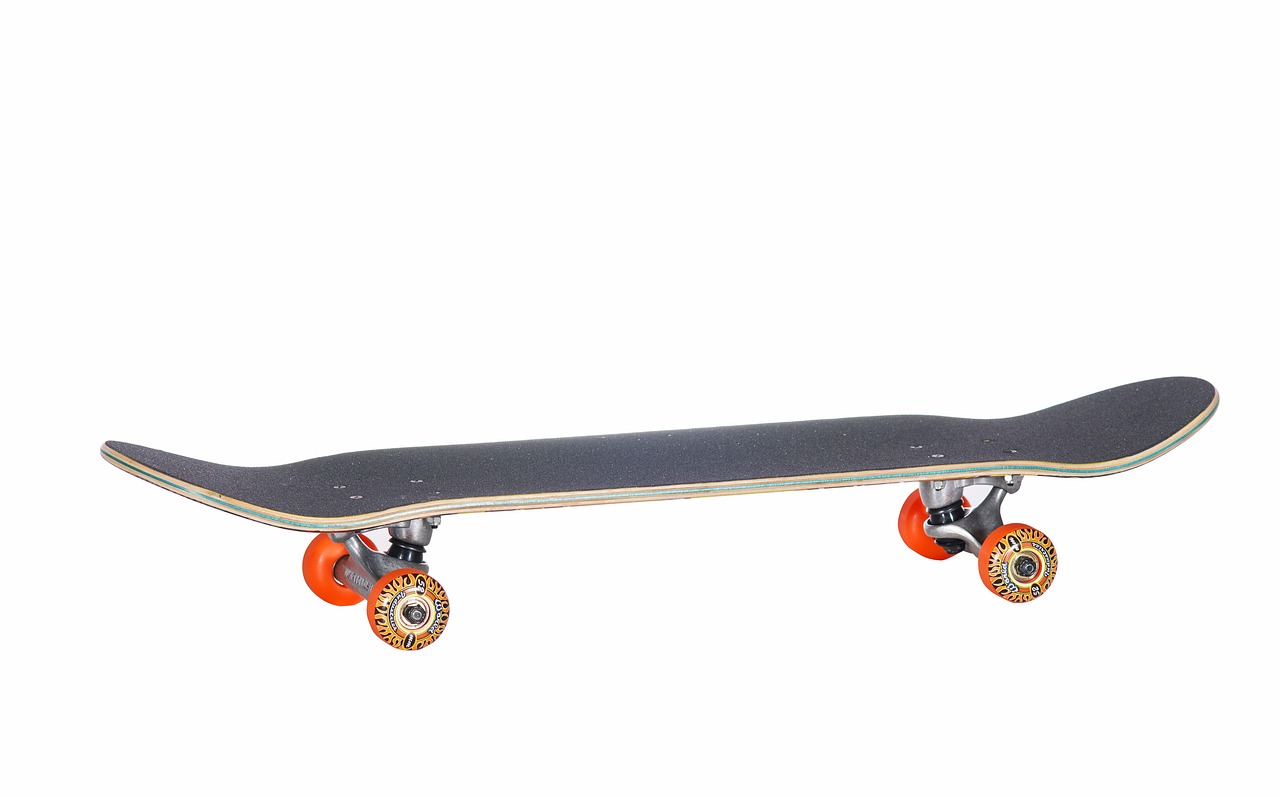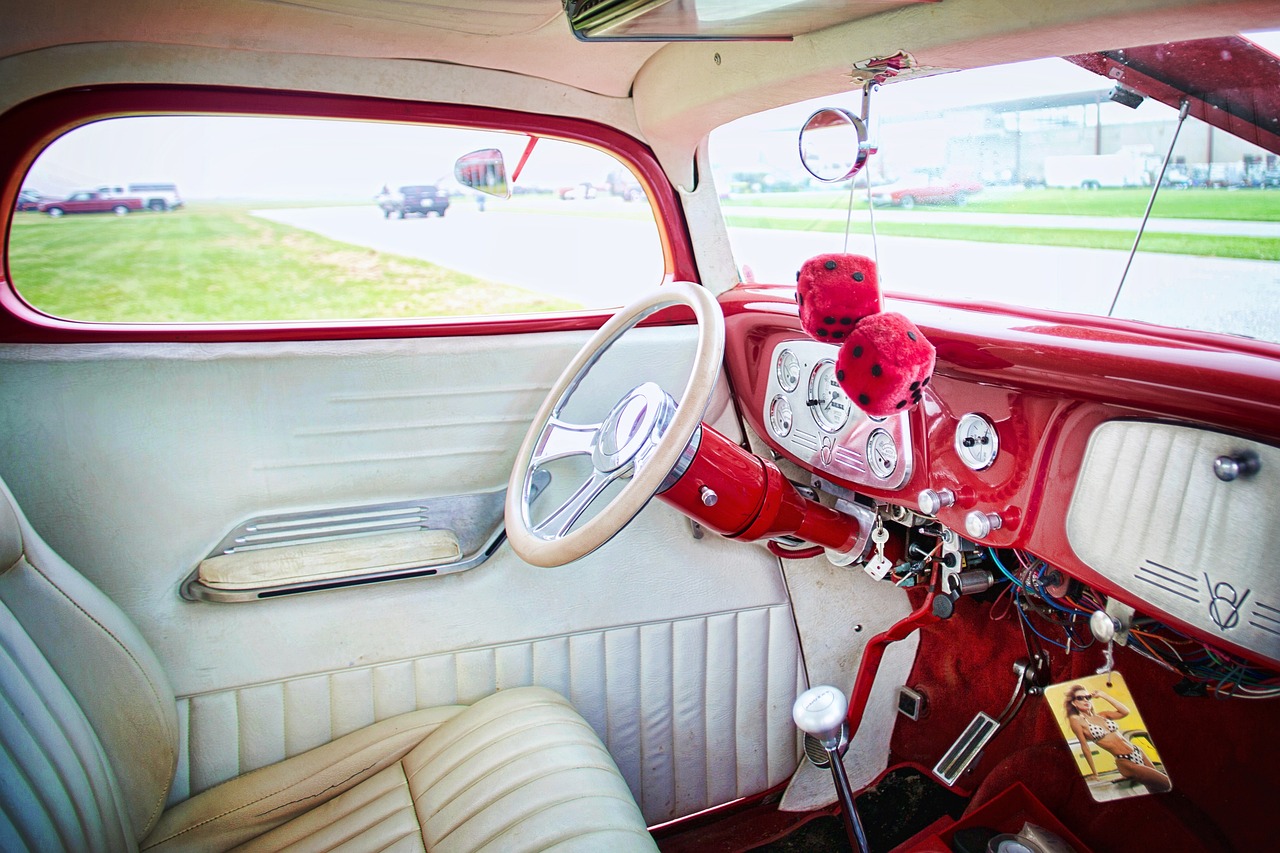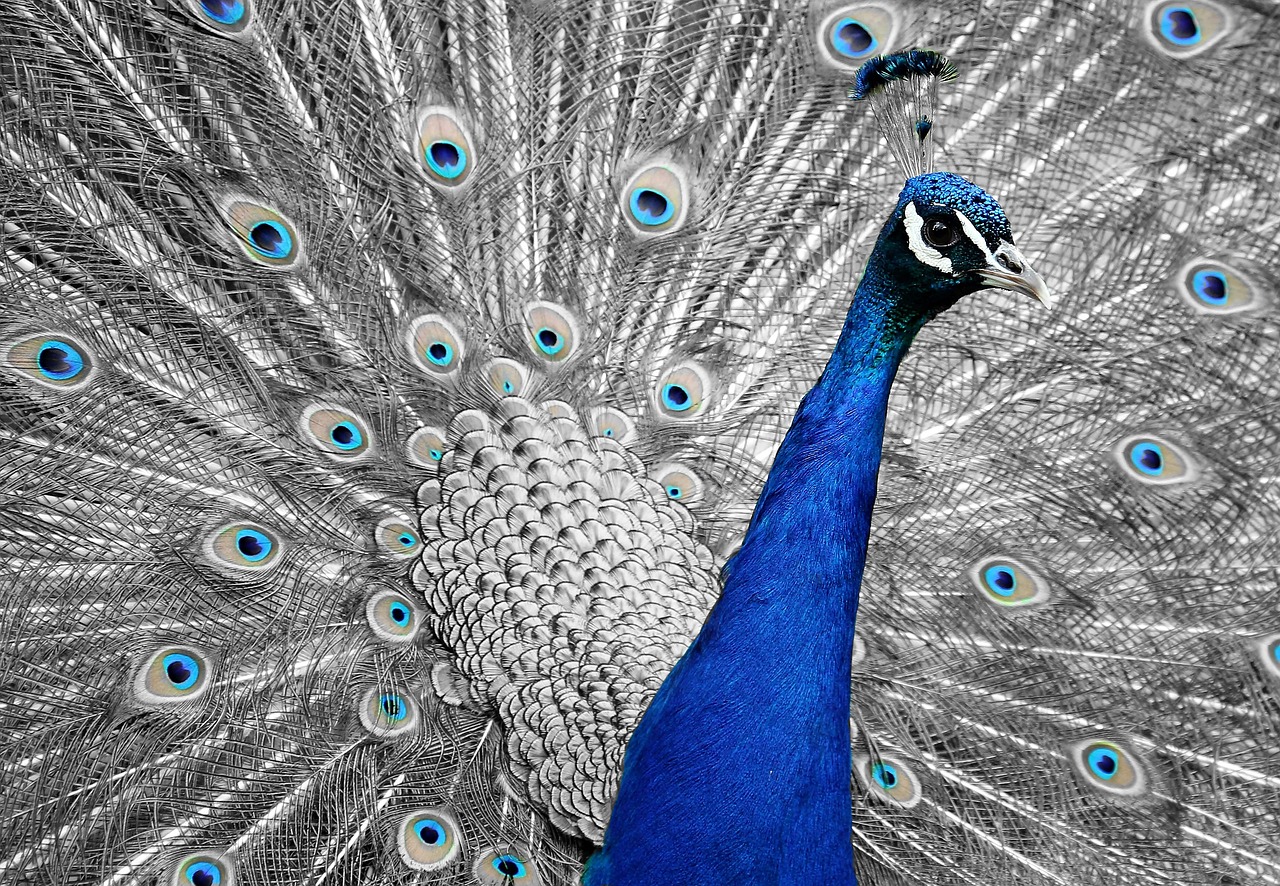Struggling with Color? Understanding the Color Wheel
Are you feeling overwhelmed by the vast array of colors available in art and design? Do you find yourself staring at a blank canvas, unsure of which hues to choose? Fear not! Understanding the color wheel can be your guiding light in the colorful world of creativity. This article explores the fundamentals of the color wheel, its significance in art and design, and practical tips for effectively using color in your creative projects.
The color wheel is a visual representation of colors arranged according to their chromatic relationship. It typically consists of three main categories: primary, secondary, and tertiary colors. Primary colors—red, blue, and yellow—are the building blocks of all other colors. When you mix these primary colors, you create secondary colors: green, orange, and purple. But wait, there's more! By blending primary and secondary colors, you unlock a whole new realm of tertiary colors, such as red-orange and blue-green. Understanding this structure is essential for anyone looking to enhance their color knowledge and application in various artistic endeavors.
Have you ever noticed how some color combinations just feel right? That’s the magic of color harmony, which refers to the pleasing arrangement of colors. It’s like composing a beautiful song; each note must complement the others to create a harmonious melody. There are several color schemes you can explore to achieve this harmony:
- Complementary: Colors that are opposite each other on the color wheel.
- Analogous: Colors that are next to each other on the wheel.
- Triadic: Three colors evenly spaced around the wheel.
By understanding these schemes, you can create visually appealing designs that resonate with your audience.
Complementary colors are the dynamic duo of the color wheel, positioned directly opposite each other. Think of them as the ultimate contrast agents! Using complementary colors effectively can create striking visuals and draw attention to specific elements in your artwork. For example, pairing a vibrant orange with a deep blue can make your design pop, creating a sense of energy and excitement.
Imagine walking into a room painted in complementary colors. Your eyes are immediately drawn to the focal points, creating a dynamic visual interest that’s hard to ignore. This technique is powerful in both art and design, as it can guide the viewer's gaze to the most important aspects of your work.
Some popular complementary color pairings include:
| Color 1 | Color 2 |
|---|---|
| Red | Green |
| Blue | Orange |
| Yellow | Purple |
These pairings can be applied in various artistic contexts, from painting to graphic design, to create impactful visuals.
On the other hand, we have analogous colors, which sit side by side on the color wheel. Think of them as your best friends in the color world! These colors work together to create a sense of harmony and cohesion. When used wisely, analogous colors can evoke specific moods and feelings, enhancing the overall aesthetic of your design.
Colors are not just visually appealing; they also carry emotional weight. Warm colors, like reds and yellows, often evoke energy and excitement, while cool colors, such as blues and greens, are calming and serene. Understanding the psychological effects of color temperature can significantly impact your design choices.
Warm colors can ignite passion and enthusiasm. They are ideal for themes that require a sense of urgency or excitement, making them perfect for marketing campaigns aimed at grabbing attention. Think of a fiery red in a sale advertisement; it’s sure to catch the eye!
In contrast, cool colors are like a gentle breeze on a hot day. They can create a tranquil environment, perfect for designs aimed at relaxation and calmness. Incorporating these colors into your projects can lead to serene and peaceful atmospheres, ideal for spaces like spas or meditation rooms.
Now that you have a solid understanding of color theory, how can you apply it to your creative process? Here are some actionable tips:
Don’t be afraid to get your hands dirty! Mixing colors is an essential skill for artists and designers. By experimenting with different combinations, you can achieve unique shades and tones that will elevate your work. Remember, the color wheel is your playground—explore and have fun!
In today's digital age, there are numerous tools and resources available to simplify your color selection process. Online color generators and apps can help you find the perfect palette for your projects, making the daunting task of color selection a breeze.
Q: What is the color wheel?
A: The color wheel is a visual representation of colors arranged according to their chromatic relationships, typically including primary, secondary, and tertiary colors.
Q: How do I create color harmony?
A: You can create color harmony by using color schemes such as complementary, analogous, or triadic colors that work well together.
Q: What are warm and cool colors?
A: Warm colors (like red and yellow) evoke energy, while cool colors (like blue and green) create a calming effect.
Q: How can I experiment with colors?
A: Mixing colors and using color tools or apps can help you explore different shades and palettes for your projects.

The Basics of the Color Wheel
Understanding the color wheel is like learning the ABCs of art and design. It’s your roadmap to navigating the vibrant world of colors! At its core, the color wheel is a circular diagram that illustrates the relationships between different colors. It’s divided into three main categories: primary colors, secondary colors, and tertiary colors. Each of these categories plays a crucial role in how we perceive and utilize colors in our creative projects.
Primary colors are the foundation of the color wheel. These are colors that cannot be created by mixing other colors together. The primary colors are red, blue, and yellow. When you mix these colors, you can create a plethora of new shades and hues!
Next up, we have the secondary colors, which are formed by mixing two primary colors. For instance:
- Red + Blue Purple
- Blue + Yellow Green
- Red + Yellow Orange
Finally, we have the tertiary colors, which are made by mixing a primary color with a secondary color. These colors add depth and variety to your palette, giving you even more options to work with. Some examples include:
- Red-Orange
- Yellow-Green
- Blue-Purple
By understanding the basic structure of the color wheel, you can start to experiment with different color combinations. It's like having a secret weapon in your creative arsenal! As you delve deeper into the world of color, you’ll find that each color evokes different emotions and can dramatically affect the mood of your artwork or design.
Moreover, grasping the concept of the color wheel allows you to create color harmony, which is all about finding combinations that are visually appealing. For instance, using colors that are adjacent on the wheel can create a sense of unity and calmness, while colors that are opposite each other can add excitement and energy to your work. The color wheel is not just a tool; it’s a language that speaks to the emotions and perceptions of your audience!
So, whether you're painting a masterpiece, designing a website, or even choosing an outfit, understanding the color wheel is essential. It opens up a world of possibilities, helping you make informed choices that resonate with your viewers and bring your creative visions to life.

Color Harmony and Schemes
Color harmony is the art of combining colors in a way that is aesthetically pleasing and creates a sense of balance in your designs. Think of it as the melody in a song; without harmony, the music can feel disjointed and chaotic. When it comes to art and design, understanding color harmony can elevate your work from ordinary to extraordinary. By mastering various color schemes, you can evoke emotions, set moods, and guide the viewer's eye through your composition.
There are several fundamental color schemes that every artist and designer should be familiar with. These include:
- Complementary Colors
- Analogous Colors
- Triadic Colors
- Tetradic Colors
Each of these schemes has its unique characteristics and applications. For example, complementary colors, which are located opposite each other on the color wheel, create a striking contrast that can grab attention and energize a design. On the other hand, analogous colors, which sit side by side on the wheel, offer a more serene and cohesive look, perfect for creating a calming atmosphere.
To illustrate these concepts, let's take a closer look at some of the most popular color schemes:
| Color Scheme | Description | Example Colors |
|---|---|---|
| Complementary | Colors opposite each other on the wheel, creating high contrast. | Red & Green, Blue & Orange |
| Analogous | Colors next to each other, promoting harmony and unity. | Blue, Blue-Green, Green |
| Triadic | Three colors evenly spaced around the wheel, offering vibrant contrast. | Red, Yellow, Blue |
| Tetradic | Two complementary color pairs, providing rich and varied palettes. | Red, Green, Blue, Orange |
Understanding how to use these color schemes effectively can transform your artwork. For instance, if you want to create a dramatic visual impact, you might opt for a complementary color scheme. This can be particularly effective in graphic design, where you want your message to pop. Conversely, if you're designing a peaceful landscape, an analogous color scheme can help you achieve a more cohesive and soothing look.
Ultimately, the goal of color harmony is to create a visual experience that is not only beautiful but also purposeful. By carefully selecting your color schemes, you can evoke specific feelings and reactions from your audience, making your work more engaging and memorable.
Q: What is color harmony?
A: Color harmony refers to the pleasing arrangement of colors in a design that creates a sense of balance and aesthetic appeal.
Q: How do I choose a color scheme for my project?
A: Start by identifying the mood or message you want to convey. Then, consider using complementary or analogous colors to achieve the desired effect.
Q: Can I mix color schemes?
A: Yes! Mixing different color schemes can create unique and dynamic designs. Just be mindful of balance and harmony to avoid overwhelming the viewer.
Q: Are there tools to help with color selection?
A: Absolutely! There are many online color generators and apps that can assist you in choosing and combining colors effectively.

Complementary Colors
Complementary colors are like the dynamic duo of the color wheel! They sit directly across from each other, creating a striking contrast that can make your artwork pop with energy and vibrancy. Imagine the bold clash of red and green or the serene balance of blue and orange; these pairs not only catch the eye but also evoke strong emotional responses. When you utilize complementary colors in your designs, you’re not just choosing colors; you’re crafting a visual experience that can draw viewers in and keep them engaged.
Using complementary colors effectively involves understanding their relationship and how they can enhance your work. When placed side by side, these colors intensify each other, creating a sense of depth and dimension. This is particularly useful in various artistic contexts, from painting to graphic design. For instance, if you want to highlight a specific element in your artwork, surrounding it with its complementary color can create a stunning focal point that demands attention. Think of it as using a spotlight to illuminate a star on stage!
To illustrate the power of complementary colors, let’s take a look at some popular pairings:
| Color Pairing | Effect |
|---|---|
| Red & Green | Creates a vibrant, festive atmosphere, often associated with holidays. |
| Blue & Orange | Evokes a sense of warmth and coolness, perfect for dynamic designs. |
| Yellow & Purple | Offers a regal and luxurious feel, ideal for elegant compositions. |
When incorporating these color pairings into your projects, consider the overall mood and message you wish to convey. Complementary colors can be powerful tools for storytelling in design. For example, if you’re designing a poster for a summer event, using bright yellow and deep purple can create a lively and inviting atmosphere that encourages people to join in the fun!
However, it’s essential to balance the use of complementary colors. Too much contrast can overwhelm the viewer, so it’s often beneficial to use one color as a dominant hue while allowing the complementary color to accentuate specific details. This technique not only enhances visual interest but also maintains harmony within your design. Remember, it’s all about creating a beautiful dance between colors that captivates and engages your audience!

Visual Impact of Complementary Colors
When it comes to creating visually stunning artwork, understanding the impact of complementary colors can be a game changer. These colors, which sit opposite each other on the color wheel, create a striking contrast that can instantly grab a viewer's attention. Imagine walking into a gallery where bright oranges clash with deep blues; it's like a visual explosion that makes you stop and take notice. This is the magic of complementary colors!
Using complementary colors effectively can enhance the focal points in your designs, drawing the eye exactly where you want it to go. For instance, if you're painting a landscape, a vibrant red barn set against a lush green field will pop out, creating a sense of depth and dimension that can make your artwork feel alive. The contrast not only adds vibrancy but also helps to create a sense of balance, making your composition more dynamic.
Moreover, the visual impact of complementary colors can evoke different emotions and reactions. For example, pairing a rich purple with a bright yellow can generate excitement and energy, while a combination of teal and coral can feel refreshing and modern. This versatility allows artists and designers to play with emotions and themes in their work, making it a powerful tool in any creative arsenal.
To illustrate the effectiveness of complementary colors, consider the following table that showcases popular complementary color pairings and their emotional effects:
| Color Pairing | Emotional Effect |
|---|---|
| Red & Green | Festive, Energetic |
| Blue & Orange | Exciting, Vibrant |
| Purple & Yellow | Creative, Playful |
| Teal & Coral | Fresh, Modern |
Incorporating these complementary colors into your designs can create a sense of harmony while also providing that much-needed visual punch. Whether you’re working on a digital graphic, a painting, or even interior design, understanding how to use complementary colors can elevate your work from ordinary to extraordinary.
So next time you’re planning a project, don’t shy away from using complementary colors. Embrace their boldness and let them guide your creative expression. Your audience will thank you for it, as they find themselves captivated by the vibrant contrasts and dynamic compositions you create!
- What are complementary colors? Complementary colors are pairs of colors that are located opposite each other on the color wheel, such as blue and orange or red and green.
- How can I use complementary colors in my artwork? You can use complementary colors to create contrast and draw attention to focal points in your designs. Experiment with different pairings to see what emotions they evoke.
- Are complementary colors always vibrant? Yes, complementary colors typically create a vibrant contrast, but the overall effect can vary depending on the shades and tones you choose.
- Can I mix complementary colors? While mixing complementary colors can create neutral tones, using them side by side tends to yield the most striking visual results.

Examples of Complementary Color Pairings
When it comes to creating visually stunning artwork or design, understanding complementary color pairings is crucial. These colors, positioned directly opposite each other on the color wheel, can create a striking contrast that draws the viewer's eye. Let’s delve into some popular complementary color pairings that can elevate your creative projects.
One classic example is the pairing of red and green. This combination is often associated with the holiday season, but it can also evoke feelings of energy and vibrancy in other contexts. For instance, using red for focal points and green for backgrounds can create a dynamic interplay that captivates attention.
Another powerful duo is blue and orange. This pairing is frequently seen in sports teams and branding because of its energetic appeal. The coolness of blue balances the warmth of orange, making them an excellent choice for designs that aim to convey excitement while maintaining a sense of professionalism.
Let’s not forget about purple and yellow. This combination is often used in artistic settings, as it brings a sense of creativity and originality. Purple, associated with luxury and sophistication, contrasts beautifully with the cheerful and lively yellow, creating a balance that can invigorate any artwork.
Here’s a quick reference table for some popular complementary color pairings:
| Color Pair | Hex Codes |
|---|---|
| Red and Green | #FF0000 and #00FF00 |
| Blue and Orange | #0000FF and #FFA500 |
| Purple and Yellow | #800080 and #FFFF00 |
| Teal and Coral | #008080 and #FF7F50 |
Lastly, consider the pairing of teal and coral. This combination brings a modern and fresh feel to any design. The soothing nature of teal complements the warm and inviting coral, making it perfect for designs that aim to convey a sense of relaxation and comfort.
In summary, using complementary colors effectively can significantly enhance your designs. Whether you’re painting a canvas, designing a website, or creating a marketing campaign, these color pairings can help you achieve a striking visual impact. Experiment with these combinations, and you’ll find that the right complementary colors can transform your work from ordinary to extraordinary!
- What are complementary colors? Complementary colors are pairs of colors that are located opposite each other on the color wheel, creating a strong contrast when used together.
- How do I choose complementary colors for my project? Start by selecting a base color and then look at the color wheel to find its complementary color, which will be directly opposite.
- Can I use more than two complementary colors? While traditional complementary color schemes involve two colors, you can also experiment with multiple complementary pairs for a more complex palette.
- What is the effect of using complementary colors? Using complementary colors can create visual interest, enhance focal points, and evoke specific emotions in your audience.

Analogous Colors
Analogous colors are a harmonious trio of colors that sit next to each other on the color wheel. They share a common hue and create a soothing visual experience when used together. Imagine walking through a serene forest where the leaves transition from vibrant greens to soft yellows and warm oranges as the sun sets. That’s the magic of analogous colors! They evoke feelings of unity and cohesion, making them perfect for creating designs that are both inviting and aesthetically pleasing.
When working with analogous colors, you typically select one dominant color and use the adjacent colors as accents. This approach not only enhances the visual appeal but also helps to guide the viewer's eye through the composition. For instance, if you choose blue as your primary color, the colors directly beside it—blue-green and blue-purple—can serve as complementary shades that enrich your design without overwhelming it.
One of the best aspects of using analogous colors is their ability to evoke specific moods. For example:
- Warm Analogous Colors: Colors like red, red-orange, and orange create a sense of warmth and excitement, often associated with energy and enthusiasm.
- Cool Analogous Colors: Shades such as blue, blue-green, and green can instill feelings of calmness and tranquility, making them ideal for creating peaceful environments.
To illustrate the concept further, here’s a simple table showcasing some popular analogous color combinations and their typical uses:
| Color Combination | Typical Use |
|---|---|
| Red, Red-Orange, Orange | Warm, energetic designs, such as promotional materials or children's art. |
| Blue, Blue-Green, Green | Calm and serene designs, perfect for health and wellness branding. |
| Yellow, Yellow-Orange, Orange | Cheerful and vibrant designs, great for summer themes or festive events. |
In conclusion, utilizing analogous colors in your projects can lead to stunning results that resonate with viewers. Whether you're an artist looking to evoke emotions or a designer aiming for a cohesive look, understanding how to effectively apply these colors can elevate your work to new heights. So, the next time you're selecting a color palette, consider the beauty and harmony that comes from using colors that sit side by side on the color wheel.

Understanding Warm and Cool Colors
When diving into the world of color, one of the most fascinating aspects to explore is the distinction between warm and cool colors. These categories are not just about aesthetics; they hold significant power in evoking emotions and setting the mood in any artistic or design project. Imagine walking into a room painted in bright reds and oranges. You might feel energized, excited, or even a bit anxious. Now, picture a space bathed in soft blues and greens. Instantly, a sense of calm washes over you, doesn’t it? This emotional response is what makes understanding color temperature so crucial.
Warm colors, such as reds, yellows, and oranges, are often associated with feelings of energy, excitement, and passion. These colors can create a sense of urgency, making them ideal for designs that aim to grab attention. Think about the use of warm colors in fast-food restaurants; they are strategically chosen to stimulate appetite and encourage quick decisions. On the other hand, cool colors like blues, greens, and purples evoke feelings of calmness, serenity, and tranquility. They are often used in spaces designed for relaxation, such as spas and bedrooms, to create a soothing environment.
The psychological effects of these color temperatures can be profound. For example, warm colors can be used effectively in marketing campaigns aimed at promoting action or excitement. Brands often utilize these colors to invoke feelings of warmth and friendliness, making consumers feel more connected. In contrast, cool colors can be beneficial in designs that require focus and concentration, such as in offices or study spaces. They help to reduce stress and promote a sense of peace, allowing individuals to work or study more effectively.
To illustrate the differences further, let’s take a look at the following table that summarizes the characteristics of warm and cool colors:
| Color Type | Examples | Emotional Impact |
|---|---|---|
| Warm Colors | Red, Orange, Yellow | Energy, Excitement, Warmth |
| Cool Colors | Blue, Green, Purple | Calm, Serenity, Relaxation |
Understanding the use of warm and cool colors can significantly enhance your ability to convey messages through your work. Whether you are painting a canvas, designing a website, or creating a marketing campaign, the right color choices can make all the difference. So, the next time you find yourself selecting colors, ask yourself: What emotions do I want to evoke? How do I want my audience to feel? By keeping these questions in mind and utilizing the principles of warm and cool colors, you can elevate your creative projects to new heights.
- What are warm colors? Warm colors include reds, oranges, and yellows, and they typically evoke feelings of energy and excitement.
- What are cool colors? Cool colors such as blues, greens, and purples are associated with calmness and serenity.
- How do warm and cool colors affect mood? Warm colors can create an energetic atmosphere, while cool colors promote relaxation and tranquility.
- Can warm and cool colors be used together? Yes! Combining warm and cool colors can create a dynamic visual contrast and enhance the overall aesthetic of a design.

Psychological Effects of Warm Colors
When it comes to color, warm colors like red, orange, and yellow are often associated with feelings of energy, excitement, and warmth. These colors can evoke a sense of enthusiasm and passion, making them incredibly powerful tools in both art and design. Have you ever noticed how a bright red can instantly grab your attention? That’s the magic of warm colors at work! They can create an emotional response that is almost palpable, transforming the atmosphere of a space or the tone of a piece of artwork.
Warm colors are often used in environments where you want to foster a sense of liveliness or urgency. For example, restaurants frequently utilize warm colors to stimulate appetite and encourage social interaction. Think about it: when you walk into a place painted in warm hues, don’t you feel a bit more energized? That’s because these colors can stimulate the nervous system and increase heart rates, making them ideal for settings that thrive on activity.
Additionally, warm colors can also have implications in branding and marketing. Brands that want to convey energy and excitement often incorporate warm colors into their logos and advertising materials. For instance, fast-food chains like McDonald's use red and yellow to create a sense of urgency and to attract customers. It’s fascinating how color can influence our decisions and perceptions without us even realizing it!
Here’s a quick breakdown of the psychological effects of some common warm colors:
| Color | Psychological Effect |
|---|---|
| Red | Evokes passion, energy, and urgency. |
| Orange | Conveys enthusiasm, creativity, and warmth. |
| Yellow | Symbolizes happiness, optimism, and clarity. |
However, it’s essential to remember that the context in which these colors are used can significantly affect their impact. For example, while red can symbolize love and passion, it can also represent danger or aggression. This duality makes it crucial for artists and designers to consider the overall message they want to convey when using warm colors. A well-thought-out color choice can enhance the emotional depth of a piece, while a hasty decision could lead to unintended interpretations.
In conclusion, warm colors are not just visually stimulating; they can also profoundly influence emotions and behaviors. Whether you’re painting a canvas, designing a website, or even choosing an outfit, understanding the psychological effects of warm colors can help you create a more impactful and engaging experience. So, the next time you reach for that vibrant hue, think about the feelings you want to evoke and how it can transform your project!
- What are warm colors? Warm colors include red, orange, and yellow, and they evoke feelings of warmth and energy.
- How do warm colors affect mood? Warm colors can stimulate emotions like excitement, enthusiasm, and even urgency.
- Can warm colors be used in all design contexts? While warm colors can create a lively atmosphere, their effectiveness depends on the context and the message you want to convey.

Psychological Effects of Cool Colors
Cool colors, which include shades like blue, green, and violet, are often associated with tranquility, calmness, and serenity. When you think of a clear blue sky or a lush green forest, it’s easy to see why these colors evoke such peaceful feelings. They are like a gentle breeze on a hot day, soothing and refreshing. In design and art, the use of cool colors can create environments that promote relaxation and contemplation, making them ideal choices for spaces intended for rest or focus.
One of the most fascinating aspects of cool colors is their ability to influence our emotions and perceptions. For instance, blue is often linked to feelings of stability and trust, which is why many corporate brands incorporate it into their logos. Similarly, green is associated with nature and growth, making it a popular choice for wellness and environmental brands. These connections can significantly impact how viewers perceive a piece of art or design, guiding their emotional responses and even their behaviors.
In practical applications, cool colors can be strategically used to achieve specific effects. For example, if you're designing a spa or a meditation room, incorporating cool colors can enhance the overall atmosphere of peace and relaxation. Conversely, in a marketing context, using cool colors can help convey a sense of reliability and professionalism, which can be beneficial for businesses looking to establish trust with their customers.
To illustrate the psychological effects of cool colors, consider the following table that highlights common cool colors and their associated feelings:
| Cool Color | Associated Feelings |
|---|---|
| Blue | Calmness, Trust, Stability |
| Green | Growth, Harmony, Balance |
| Purple | Luxury, Creativity, Mystery |
It's also important to note that the effects of cool colors can vary depending on their shade and context. A deep navy blue might evoke feelings of depth and seriousness, while a light sky blue can feel airy and open. This versatility allows artists and designers to play with cool colors in various ways to achieve their desired outcomes. So, whether you're painting a landscape, designing a website, or decorating a room, understanding the psychological effects of cool colors can be a game-changer in your creative process.
- What are cool colors? Cool colors include shades like blue, green, and violet, which are often associated with calmness and serenity.
- How do cool colors affect emotions? Cool colors can evoke feelings of tranquility, stability, and trust, influencing how people perceive art and design.
- Can I use cool colors in marketing? Yes, cool colors can help convey professionalism and reliability, making them effective in branding and marketing strategies.
- What is the best way to use cool colors in design? Use cool colors to create relaxing environments, enhance focus, or promote trust, depending on the context of your project.

Practical Tips for Using the Color Wheel
When it comes to unleashing your creativity, the color wheel is an invaluable tool. Using it effectively can transform your artwork, making it not just visually appealing but also emotionally resonant. Here are some practical tips to help you navigate the color wheel like a pro:
First and foremost, understand the fundamentals. Familiarize yourself with the primary colors (red, blue, yellow), secondary colors (green, orange, purple), and tertiary colors (like red-orange or blue-green). This foundational knowledge will serve as your compass in the colorful world of art and design. Think of the color wheel as a map; if you know where you are starting, you can navigate to where you want to go!
Next, experiment with color mixing. Don’t be afraid to get your hands dirty! Mixing colors can lead to unexpected and delightful results. For instance, if you're looking for a softer shade of green, try mixing yellow with a touch of blue. Keep a color journal where you document your experiments and the outcomes. This can be a great reference for future projects and will help you develop a keen eye for color.
Another important tip is to utilize color tools and resources. There are countless online color generators and apps designed to simplify the color selection process. Tools like Adobe Color, Coolors, and Color Hunt allow you to explore various color schemes effortlessly. These resources can help you visualize how different colors work together, making it easier to implement them in your projects.
When working on a project, consider creating a color palette that aligns with your theme or message. A well-thought-out palette can enhance the overall impact of your design. For example, if you want to evoke a sense of calmness, you might choose a palette dominated by cool colors like blues and greens. Conversely, if you aim to energize your audience, opt for warm colors like reds and yellows.
Finally, don’t forget to trust your instincts! While the color wheel provides a solid foundation, your personal taste and experiences play a significant role in your artistic journey. Sometimes, breaking the rules can lead to the most compelling results. So, as you explore the color wheel, let your creativity flow and embrace the joy of color!
- What is the color wheel?
The color wheel is a circular diagram that illustrates the relationships between colors. It helps artists and designers understand how to mix colors and create harmonious color schemes.
- How do I choose a color scheme?
Start by determining the mood or message you want to convey. Use the color wheel to find complementary, analogous, or triadic color schemes that align with your vision.
- Can I use more than three colors in a design?
Absolutely! While three colors often create a balanced look, adding more can bring complexity and depth to your design. Just ensure they work well together.
- What are warm and cool colors?
Warm colors (like red, orange, and yellow) evoke energy and excitement, while cool colors (like blue, green, and purple) create a sense of calm and tranquility.

Experimenting with Color Mixing
Color mixing is like a dance; it requires practice, patience, and a bit of intuition to master. When you dive into the world of color mixing, you open up a treasure chest of possibilities that can elevate your artistic creations. Whether you're a painter, graphic designer, or just someone who loves to play with colors, understanding how to mix them effectively is essential. So, how do you get started? Let’s explore some techniques and tips that will help you experiment with color mixing like a pro!
First off, it's important to understand the basics of color theory. The primary colors—red, blue, and yellow—are your foundation. When you mix these colors, you create secondary colors: green (blue + yellow), orange (red + yellow), and purple (red + blue). But why stop there? By combining primary and secondary colors, you can create a range of tertiary colors, enriching your palette and giving you more options to work with.
One effective technique for color mixing is to start with small amounts of paint or color. This way, you can gradually adjust and see how each addition changes the hue. For instance, if you're trying to create a specific shade of green, begin with a small dollop of blue and add yellow bit by bit until you achieve the desired tone. This method not only saves materials but also helps you learn how colors interact with one another.
Another fun approach is to use a color wheel as your guide. The color wheel is more than just a visual tool; it can become your best friend in the mixing process. By referring to the color wheel, you can identify which colors complement each other and which ones might clash. For example, if you want to create a vibrant landscape painting, you might choose to mix greens and browns, referring to the wheel to find the right shades that will harmonize with your chosen palette.
Here’s a quick tip: always keep a color mixing journal. This doesn’t have to be fancy; it can simply be a sketchbook where you jot down your color combinations, the ratios you used, and the results. Over time, you'll build a personalized reference guide that will help you replicate successful mixes and avoid any mishaps in the future.
Lastly, don’t be afraid to experiment! Mixing colors is as much about intuition as it is about technique. Try mixing unexpected colors together and see what happens. You might create a beautiful shade that you never thought could exist. Remember, art is about exploration and discovery. Embrace the surprises that come with mixing colors, and let your creativity flow!
- What are the primary colors? The primary colors are red, blue, and yellow. They cannot be created by mixing other colors.
- How can I create a lighter shade of a color? To lighten a color, you can mix it with white. This technique is known as tinting.
- What is the difference between tint, tone, and shade? A tint is created by adding white to a color, a tone is made by adding gray, and a shade is created by adding black.
- Can I mix acrylic and oil paints? It is not recommended to mix acrylic and oil paints, as they have different bases and drying times, which can lead to issues in your artwork.

Using Color Tools and Resources
In today's digital age, utilizing color tools and resources can dramatically enhance your creative projects. Whether you're an artist, designer, or hobbyist, there are numerous platforms and applications designed to simplify the color selection process. These tools not only help you choose colors but also allow you to visualize how they will look together in your designs. Imagine having a personal color assistant at your fingertips!
One of the most popular types of color tools are color generators. These online platforms can create palettes based on a single color you choose. For instance, if you have a specific shade in mind, you can input it, and the generator will suggest complementary, analogous, and triadic colors to enhance your palette. Some notable color generators include:
- Adobe Color - A versatile tool that allows you to create and explore color themes, providing inspiration and various options.
- Coolors - This intuitive tool generates color schemes at the click of a button, making it easy to find the perfect combination.
- Color Hunt - A curated collection of beautiful color palettes that can spark your creativity.
Another resource that can be incredibly beneficial is the use of color wheel apps. These applications often feature interactive wheels that allow you to experiment with different color combinations easily. You can spin the wheel to find new colors, see how they work together, and even save your favorite combinations for future reference. This is particularly useful for designers who need to quickly adapt their color choices based on client feedback or project requirements.
Additionally, if you're looking to dive deeper into color theory, there are numerous online courses and tutorials that focus on the psychology of color and its application in design. Websites like Skillshare and Udemy offer classes that can enhance your understanding of color dynamics and help you apply them effectively in your work.
Lastly, don't underestimate the power of physical resources. Color swatch books, paint samples, and printed color wheels can provide tangible references that are often more inspiring than digital screens. These resources allow you to see how colors interact in natural light and can help you make more informed decisions when selecting colors for your projects.
In essence, leveraging these color tools and resources can significantly elevate your design game. Whether you're mixing colors for a painting or selecting a palette for a website, these tools can provide the structure and inspiration you need to create visually stunning work. So, why not give them a try? You might just discover a new favorite color combination!
Q1: What is the best color tool for beginners?
A1: For beginners, Coolors is highly recommended due to its user-friendly interface and instant palette generation.
Q2: How do I choose a color scheme for my project?
A2: Start with a base color that resonates with your theme, then use a color generator to find complementary or analogous colors that enhance your design.
Q3: Can I use color theory in digital design?
A3: Absolutely! Color theory is essential in digital design as it helps create visually appealing and effective compositions.
Frequently Asked Questions
- What is the color wheel?
The color wheel is a visual representation of colors arranged according to their chromatic relationship. It helps artists and designers understand how colors interact, making it easier to create harmonious color schemes.
- Why is understanding color harmony important?
Color harmony is crucial because it creates a sense of balance and aesthetic appeal in your designs. By using harmonious color schemes, you can evoke specific emotions and guide the viewer's eye to focal points in your artwork.
- What are complementary colors?
Complementary colors are pairs of colors located directly opposite each other on the color wheel. When used together, they create a striking contrast that can enhance the vibrancy of your artwork.
- How do I use complementary colors effectively?
To use complementary colors effectively, consider placing them next to each other to create contrast or using one as a dominant color while the other serves as an accent. This technique can help draw attention to key elements in your design.
- What are analogous colors?
Analogous colors are groups of three colors that are next to each other on the color wheel. They typically create a serene and comfortable design, as they are closely related and work well together.
- How do warm and cool colors affect emotions?
Warm colors, like reds and yellows, often evoke feelings of energy and excitement, while cool colors, such as blues and greens, tend to promote calmness and relaxation. Understanding these effects can help you choose the right colors for your project.
- What are some practical tips for using the color wheel?
Start by experimenting with color mixing to discover new shades and tones. Utilize color tools and resources, such as online color generators, to simplify your selection process and enhance your creativity.
- Are there any tools to help with color selection?
Yes! There are numerous online tools and apps available that can assist with color selection. These resources can help you visualize color combinations and find inspiration for your projects.



















